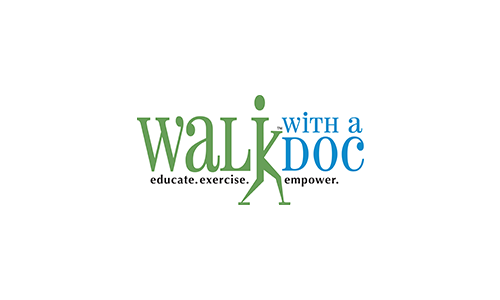How nutrition and play can team up to fight it
It's back to school time. Is there a better time to assess how your children are eating and make any needed changes in physical activity level as well?
Nutrition and play…a good combination for good health. Think about it. There are some direct connections to how good nutrition is intertwined with healthy play as well as a healthy body. Most diet plans seem to suggest exercise as an important part of the weight loss process and for becoming healthy in general. It seems as though you just can’t have one without the other.
The “O” word is about to surface yet again. What to do about obesity? The amount of physical activity, other than playground use, seems to be down in our schools. It would be ideal if more time was available for PE, but that’s not always the case. Who or what is to blame? Budget cuts and the “No Child Left Behind” act have been a part of this shift toward smaller blocks of scheduled physical activity at school, but they certainly cannot be cited as the main cause.
We are trying to keep up with the rest of the world in the education ring. And let’s face it, it is very important to keep up with technological and educational advances in the world. Stepping up education seems to be the solution to keeping up. We can’t blame the teachers. They are doing their best to keep up with curriculum mandates and any other challenges they face in the classroom.
So, it seems we all have to do our part to promote good nutrition and also find avenues leading to physical fitness for our children along the way to promoting academic excellence.
Studies have shown that children skipping breakfast typically perform at lower levels than their potential. Part of this seems to be that they are distracted because they are hungry and also because their body and brain haven’t received the fuel needed to keep going. This is one reason school lunch programs have implemented the breakfast segment of their program so kids who might not get breakfast at home have it available at school.
Some positive things are taking place in our school lunch programs to help. By the end of June 2006, all schools in Idaho, for example, have to have a wellness program in place. This could include more books about nutrition in the library, a physical activity plan and even more nutritious choices available in the cafeteria.
As pointed out by the supervisor and director of School Nutrition Association for School District 251 in Rigby, Idaho, Bonnie Helsing, our schools are “Feeding America.” This seems so during the school year as two meals a day can now be available.
Helsing’s group is surely in the running as the leading ladies of nutrition because of their efforts. “We as workers are really trying to promote healthy choices and physical activity with the children, and to help them make good lifelong nutritional choices,” notes Helsing, who was also the President for the Idaho School Nutrition Association this past year. Helsing’s ladies across the state had adopted the slogan “We’re Dishin’ Nutrition” to try to further this effort.
Helsing has adopted a theory from a study completed at the University of Texas about remembering things and relates it to adopting good nutrition habits. She notes, “If we retain 10 percent of what we read, 20 percent of what we hear, 30 percent of what we see, 50 percent of what we hear and see, 70 percent of what we say, and 90 percent of what we say and do, then it makes good sense to have children participating in learning about nutrition rather than just hearing about it.”
So, with this in mind, they held an art contest in which children had to draw something to depict good nutrition and to go along with the theme “We’re Dishin’ Nutrition” with awards presented at their yearly Idaho School Food State Conference; June 13, 2005. There were three different divisions, high school, junior high, and middle and grade school with over 600 children across the state participating. They awarded a first prize of $50, second $25, third $15 and fourth of $10 in each division. Winners were chosen from all areas of the state, and every child who participated was given a coupon for a free ice cream cone from McDonald’s. Helsing’s ladies then made a quilt with some of the standout entries to be displayed at the conference.
The association had also issued a challenge for all the school lunch staff across the state to “Make a Difference, Walk the Talk and Fight Obesity”.
They had to complete an activity in three areas, school, community and personal life. The ladies did things such as joining fitness centers for their personal goal, facilitating a “Wheel Day” for the children at school, and raising funds for someone in the community with a nutrition and physical fitness type activity. Medallions were given to 159 ladies.
The “Wheel Day” was a fun event to help get kids excited about combining good nutrition and exercise as they rode around the playground on just about anything with wheels and had nutritious snack breaks.
The community of Rexburg, Idaho showed up to support Anthony Robbins Day, organizers adopted the theme “We love you with all our kidney” and accepted donations in exchange for children participating in different physical fitness activities for a child who had served food for two years in the school cafeteria.
Nutrition breaks have even come into play. These are short breaks during the day where students can opt for a healthy snack and then continue on with their schoolwork hopefully refreshed and ready to go.
There are few ways schools are planning their meals now, and they seem to be well-thought out plans for upping the ante on good nutrition.
One option is where food is analyzed and planned for a month’s time. The guidelines specify that there must be a maximum of 30 percent of unsaturated fat and 20 percent of saturated fats in the menu over that period of time.
Nutrition specialists have the option to choose whatever foods they will as long as they do not exceed that percentage in a month’s time.
Another option is based more on the healthy foods pyramid, which is based more on portion size and calories served of dairy, meats, vegetables, grains, and fruits each month.
There are always innovative things going on out there in the world of nutrition. Another option that can be utilized by schools would be the minutebaker potato from Potato Products of Idaho. Representative, Shane Jackson, notes that "By using Premium Bakers, prep time and labor are reduced, and you are providing a healthy alternative to the fast-food option."
This is something else schools might consider, as it could be a convenient option for cooks and students on the go. PPI has a regular Premium Baker and a foil-wrapped one to choose from. These are good Idaho potatoes as well.
How could you resist? They are scrubbed and prepared for you, and you just have to heat them up. Log on to www.minutebaker.com and see the benefits.
Children really do need to begin, at an early age, being more concerned about their nutrition and physical activity. The fact is, according to http://k12s.phast.umass.edu/abc/unit1/facts_about_fitness.html, how they eat now affects their health and eating patterns throughout their adult life. If they are obese now, they stand a much greater risk of health problems and obesity for the rest of their life. They need to be taught to choose healthy eating patterns and add physical activity to their daily life. The more they are educated, the more healthy they stand to become. Play is such an important part of this, whether it is organized or free play...physical exercise is one of the best ways to stamp out obesity, and eating right is a big part of this and can help children keep up with the needed energy to continue to enjoy the benefits of play.
If you are unsure about what constitutes good nutrition these days, take a look at the history of www.mypyramid.gov. This was an interactive tool based on the view that when it comes to nutrition, one size does not fit all. It was for use on a personal basis and can help choose the foods and portions right for you.
The play and good nutrition cycle is definitely one to get into and stay with to help reduce the "O" factor. If you have questions about your school lunch program and what they are doing to help the cause, don't be afraid to contact your school nutrition specialist and find out the particulars. It seems they are all out to help your children get the most nutrition out of their meals. You may even want to help promote some of the nutrition/physical activity programs Helsing's ladies have implemented and help get everyone more excited about combining good nutrition and play.







Add new comment